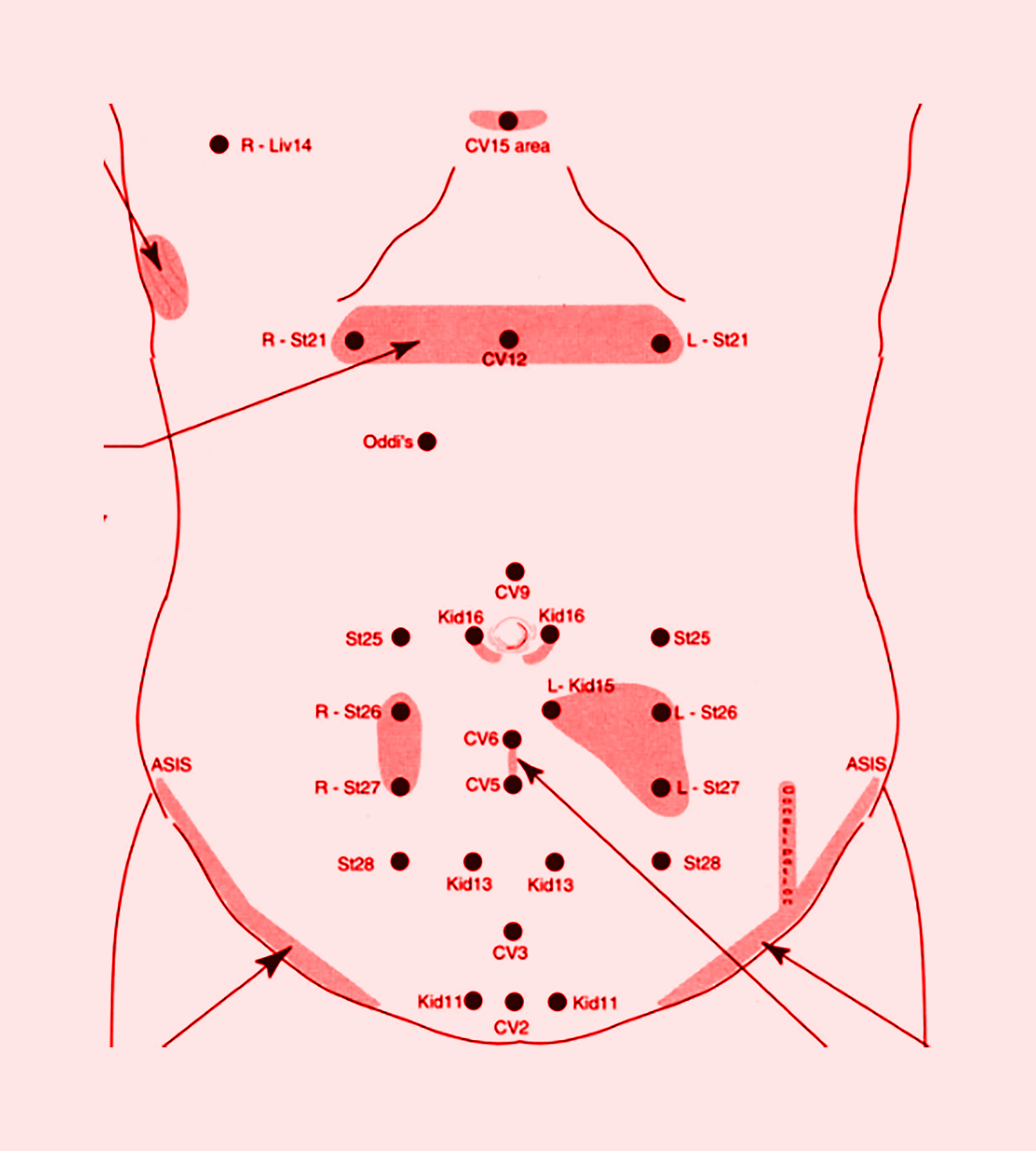Seminar Introduction
An amazing opportunity for building a solid foundation.
In January 2026, Qiology is pleased to invite Vidhya “V” Rojanavongse, esteemed Acupuncturist and teaching assistant of Master Acupuncturist Kiiko Matsumoto, to Australia to conduct the “Foundations in Kiiko Matsumoto Style Acupuncture” Four-day Intensive Courses in Sydney and Brisbane.
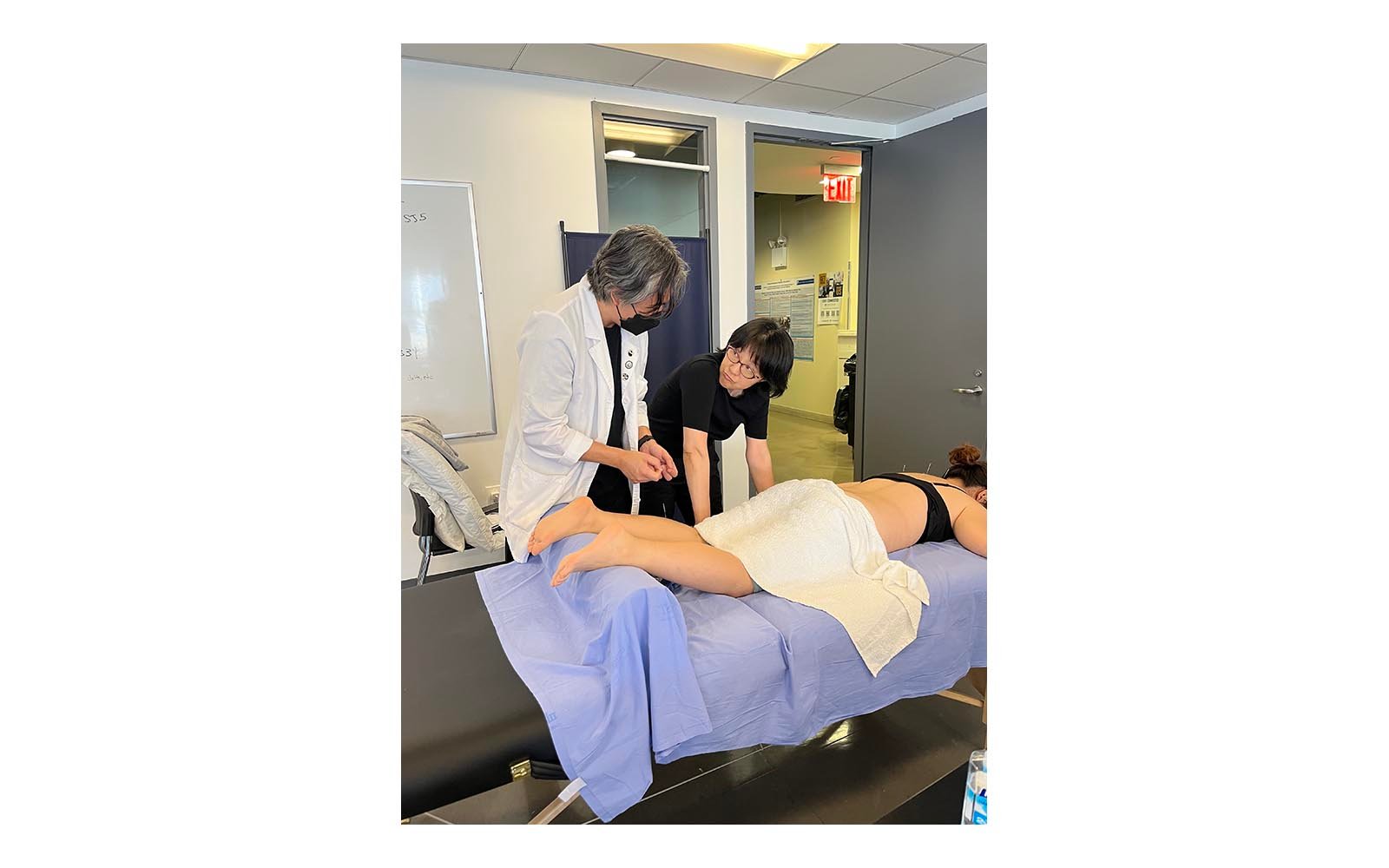
This course has been offered by Qiology seven times in various cities in Australia and New Zealand over the past 13 years, training up to 250+ Acupuncturists, and is back by popular demand. This course has not been offered in Australia since 2019, and is Qiology’s most popular course, so those who have been waiting for this opportunity- the time is now!
This course provides attendees with a unique opportunity to build a solid and complete foundation for applying Kiiko Matsumoto Style (KMS) Acupuncture in their clinical practice. This course has been brought to Australia on specific request from Kiiko Matsumoto, in order to raise the level of proficiency in the practice of KMS Acupuncture within Australia. Vidhya Rojanavongse has been appointed by Kiiko Matsumoto as the official KMS instructor for Australia and New Zealand as of 2025.
KMS Acupuncture has been continuing to evolve over the years as Kiiko Matsumoto refines and develops the treatment strategies that she has integrated as a result of her study with important Japanese acupuncture Masters, including Master Nagano, Master Kawai and Dr. Manaka.
V has had the unique opportunity of studying, working, and teaching with Ms. Matsumoto for more than 20 years in the US, and has dedicated himself to the practice and teaching of this clinically effective Acupuncture style.
V specializes in presenting the foundations of KMS acupuncture alongside Kiiko’s most up-to-date information in a highly structured and coherent manner, allowing attendees to maximise their understanding of KMS acupuncture and enabling them to apply it fluently within their practice on their first day back in clinic, for outstanding clinical results.
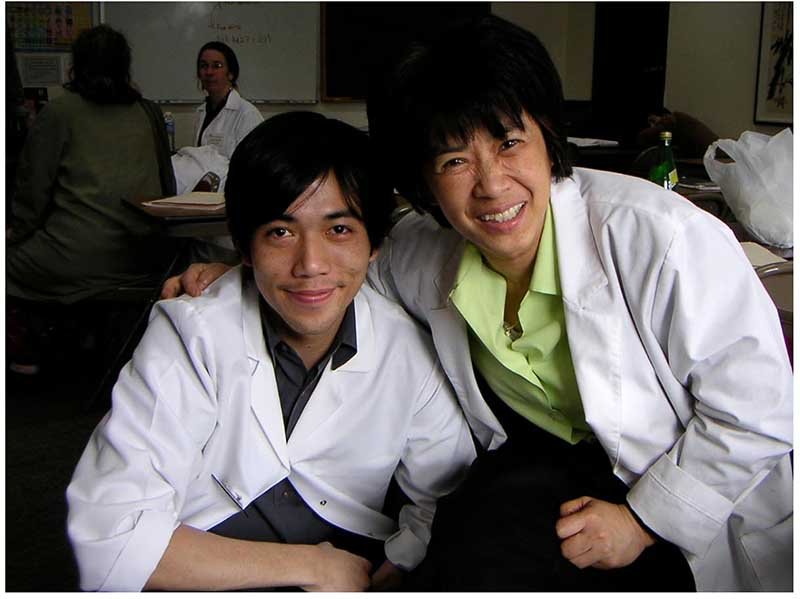
“V. is a wonderful teacher, highly skilled and has a great understanding of the Kiiko style of acupuncture. He has studied with me for years, and has spent a great deal of time gaining a thorough understanding of my own work.
I completely trust him to teach my material to students and am happy to have him on my team.”
– Master Acupuncturist Kiiko Matsumoto
This four-day intensive course is designed to build the practitioner from the ground up in Kiiko Matsumoto Style Acupuncture, through detailed lectures, and direct hands-on experience and attention from the instructor, Vidhya Rojanavongse. The course will be 50%+ hands-on and will cover a large amount of material.
Each class has a maximum of 35 attendees permitted, to allow for individualised attention.
Please book early to avoid disappointment.
Kiiko Matsumoto Style Acupuncture is characterised by:
- Diagnosis through palpation – instant feedback for patient and practitioner through touch.
- Holistic approach – addressing the entire person to get to the root of the problem.
- Japanese tradition – steeped in tradition, yet innovative.
- Classical texts – clinical application from the classics such as the Su Wen, Ling Shu and Nan Jing.
- Modern science – bridging the information of western medicine and anatomy with traditional eastern techniques.
- Eclectic methods – wide variety of methods tailored to each individual.
Benefits of Kiiko Matsumoto Style (KMS) Acupuncture:
- The palpatory diagnostic methods in this style of acupuncture offer the practitioner an instant measure as to the effectiveness of their treatment. Both the acupuncturist and the patient will have instant feedback as to how well the treatment is working because the same reflexes which are used to determine the best treatment for a patient are also the gauge by which the treatment can be assessed.
- Kiiko Style acupuncture offers a totally new way to look at patients. It combines classical Chinese medical principles with modern pathophysiology in a way that facilitates the understanding and brings out the best in both.
- Within the treatment methods used in KMS, there is a technique suitable for any patient. As a rule the needling methods are shallow and virtually painless, using the smallest gauge needles. However, for the patient for which needling is contraindicated, there are numerous non-invasive techniques that are highly effective. The use of diodes, magnets, and other techniques give the practitioner many options with which to treat the most difficult patient.
- In many ways, KMS acupuncture takes the practice of acupuncture from the ambiguous realm of theory into the direct experience of reality. There is no more wondering week after week if the points you are using for their supposed actions and effects will work for the diagnosis which seemed so plausible on paper. In this system “you treat what you feel”. If the reflex is not present, or if specific treatment points do not significantly change the reflex quality, then some other more viable treatment option must be found. Both the practitioner and the patient always have some immediate indication as to the effectiveness of the treatment.
An Inspirational Short Video with Kiiko Matsumoto Sensei:
“Conversation with a Master”
In this video, Kiiko Sensei covers some vitally important concepts regarding how it’s vitally important for us as acupuncturists to find the most effective acupuncture points for the individual that we are in fact treating in that moment.
If we use our skills to find the “Silver,” “Gold” or “Diamond” levels of acupuncture point indicated for that specific patient, then we can achieve amazing clinical results. Kiiko Sensei gives some examples of patient cases from her clinical practice to outline this concept.
Guided by the Chinese medicine classics, through the work of Kiiko Sensei’s own masters, and through her own tireless research on her patients in her clinical practice combined with teaching internationally, Kiiko uses her unique palpation diagnostics to find the relevant diagnostic zones and the most effective acupuncture points to use in all types of conditions encountered in the clinic. By gathering this unique information and sharing it internationally with her students and instructors, we continue to gather the most effective strategies to help in effectively treating our patients.
Attribution:
We would like to give thanks to Sam Audette, and Dr. Joseph Audette, M.D. from Acumed.org for providing access and usage of this wonderful video of Kiiko Matsumoto Sensei, alongwith a big thanks to Kiiko Matsumoto Sensei for sharing this wisdom.
Talking about Kiiko Matsumoto Style Acupuncture: Interview – Peter Scarselletti (Qiology) & Chamy Leung (Acuneeds)
About the Presenter
Vidhya Rojanavongse, L.Ac.
(International KMS Instructor)
Vidhya “V” Rojanavongse is a licensed acupuncturist based in New York City. He graduated from the Tri-State College of Acupuncture (TSCA) in 2005 and has been in private practice since. Upon graduating, he apprenticed directly with Kiiko Matsumoto (2005-present) assisting in her private practice, grand rounds, seminars and has taught by her side as a teaching assistant in student clinics and skills classes at TSCA. V is personally approved by Matsumoto sensei to teach her unique style of acupuncture.
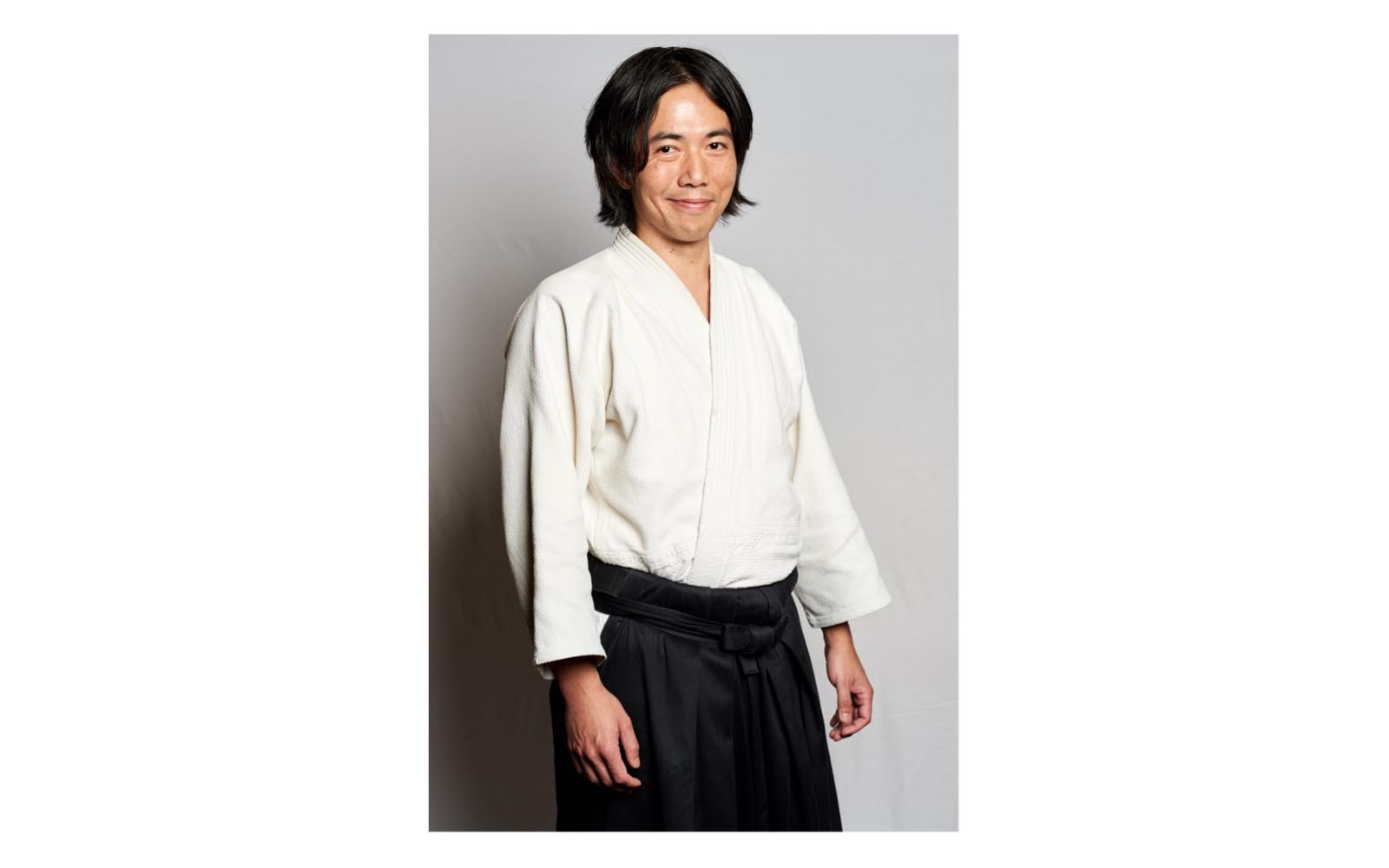
V has over 20 years of teaching experience beginning at TSCA (2005-2019) where he served as a lead clinical supervisor, grand rounds instructor and clinical skills instructor in Kiiko Matsumoto Style (KMS) acupuncture. Currently, he is a clinical supervisor at Pacific College of Health Sciences (2020-present) and teaches an elective in introductory and intermediate KMS acupuncture with a specialized student clinic in KMS. He was also a clinic supervisor at the New York College of Health Professions at Bellevue Hospital (2020-2023).
As a prolific instructor rounding out his knowledge and experiences, V is currently an adjunct lecturer in Human Anatomy and Physiology for the City University of New York (CUNY) at LaGuardia Community College (2005-present) and Hunter College School of Health Sciences (2013-present).
As a martial artist, V trains in aikido (1992-present) at the New York Aikikai. He has studied directly with the late Yoshimitsu Yamada sensei and the late Seiichi Sugano sensei, both of these great masters were direct students from the founder of aikido, Morihei Ueshiba. Currently, V holds the rank of Yondan (4th degree black belt) and is an instructor at the New York Aikikai. He has also started cross training in Eskrima and has experience in Brazilian Jujitsu.
As is required by National Law, we disclose that Vidhya Rojanavongse is not a registered health professional within Australia.

Testimonials:
“I had the opportunity to study with V. Rojanavongse, who provided a strong foundation in Kiiko Matsumoto-style acupuncture. His teaching style was clear and practical—he broke down complex material in a way that was easy to understand and apply. He emphasized the importance of precision in palpation, needling, and differential diagnosis, and took the time to guide us through hands-on practice. I learned a lot in his class and was able to incorporate the techniques into my clinical work. I would definitely recommend his course to other practitioners looking to deepen their diagnostic and treatment skills”.
– Rachel Liao, L.Ac. New York City, NY
“When I discovered KMS acupuncture, I knew it would have a profound impact on my skills as an acupuncturist. Seeing real-time results, rather than waiting until the patient’s next appointment, was refreshing after spending years learning other styles of acupuncture. It boosted my confidence as a practitioner and strengthened the trust patients had in acupuncture. I wouldn’t want to learn this style from anyone other than V, purely because of his discipline and commitment to teaching and maintaining the practice methods of his predecessors.”
-Davin Ramlogan, L.Ac. New York City, NY
“Vidhya Rojanavongse has been one of the most influential mentor and teacher in my life. His teaching of the Kiiko Mastumoto Style became one of the most prominent styles that shaped my healing art as an East Asian Medicine doctor as well as a Licensed Massage Therapist. I have learned under Vidhya R. for years because there are an endless depth of information and knowledge to learn. His style of teaching is very thorough, detailed, and very easy to understand. It provides the principles to establish a strong foundation in Kiiko Matsumoto Style. As a result, Kiiko Mastumoto Style has become one of my core styles, which helped countless people today. The style itself can be complex but thanks to Vidhya R., I was able to efficiently and effectively implement the style to my practice. Thank you, Vidhya!”
– Dr. Steven L. Nguyen, LAc, LMT, DAcCHM
“I was introduced to KMS when I was an intern in the student clinic. I had only been using TCM up to this point and was fascinated by the way this system uses palpation to diagnose and treat. Since I had not learned KMS previously, it was a struggle in the beginning to learn a whole new style of acupuncture, but V was patient and effective as a teacher, often drawing diagrams and explaining theory in a comprehensible way. I was so blown away by this system and his teaching style, that I returned to school after graduation to continue my education. I took all the classes that V taught and found his knowledge and notes invaluable. I continue to refer to my notes to this day when treating patients”.
~ Mary Chiu, L.Ac.
“I feel incredibly fortunate to have studied under V. He is an exceptional teacher. Not only is he a kind and passionate educator, but he has a gift for clearly explaining complex concepts that are often left out of standard acupuncture curriculum. As a direct student of Kiiko Matsumoto, he carries forward a lineage of deep knowledge and clinical insight, always staying current with the latest developments in the field. His teachings are thoughtfully organized and practically applicable. Many of the techniques, non-needling tools and perspectives I learned from him continue to inform my daily clinical practice with effectiveness. His impact on my growth as a practitioner has been profound”.
-Yaeji Jenny Suh, L.Ac.
“Learning from Professor V is one of the most meaningful experiences I’ve had as an acupuncture student. He cares about us and expects excellence from both himself as a teacher and from us as students. Learning Kiiko style acupuncture from him, I have already felt the edge I have over other practitioners in the field. People who have had acupuncture ask what this style is because they are surprised by how quickly they see a direct change. I highly recommend any acupuncturist who wants to be a meaningful healer to learn from Professor V”.
-Mo
“I didn’t know what Kiiko Matsumoto Style (KMS) was at first. I just heard he was a great supervisor and was teaching something interesting, so I signed up. Then I saw him press on a painful spot, and then use a specific point to release it, and the pain just went away. Whatever he was doing clearly worked. I was hooked.
He teaches in a very hands-on, detailed way. He pays attention to everything, from needle angle to depth to gauge, and makes sure we are actually doing it right. We even had to practice rice moxa on ourselves until we stopped burning ourselves before we could use it on anyone else. Let’s just say we toasted ourselves a few times before earning that privilege.
He explains things in a way that helps theory, hands-on practice, and clinical thinking all click together. The way he treats patients with skill and integrity really set the tone for the whole shift. You can tell he really cares about the medicine and about helping students grow into solid practitioners. He creates a space where it feels okay to ask questions and learn by doing.
One of my biggest aha moments was when he explained the Earth element. I had always heard it was the center, but I never really got why. He explained it in a way that finally made it make sense. After that, every clinic shift felt like puzzle pieces falling into place. Learning KMS with him changed how I see patients and helped everything I was learning in school come together”.
-Christina Reyes
“I was fortunate to study Kiiko Matsumoto Style with V for two years and was lucky enough to be placed on his clinic shift each term I could. He is one of the most impactful teachers I’ve ever had. His clarity, structure, and deep knowledge created an environment that felt grounded and expansive. Professionalism, compassion, and humility were consistently modeled for us in the classroom and in the clinic. V showed us how to think like acupuncturists, how to carry ourselves with integrity, and how to meet our patients with care. I learned so much from him and I feel incredibly grateful to have been his student”.
-Kim Jernick
“V is one of the few teachers who single handedly changed the course of my life. From the moment I walked into his clinic, I was in awe, not just of what he was teaching, but how he was teaching it. His deep knowledge of Kiiko Matsumoto Style and his ability to translate complex concepts into hands-on understanding was something I knew I needed more of. I quickly shifted the rest of my master’s program to spend as much time as possible learning from him.
V didn’t just teach, he challenged me. At the time, it wasn’t always easy, but I now recognize how essential that challenge was in shaping me into the practitioner I am today. His mentorship gave me the confidence to graduate and immediately step into private practice on my own, something I never imagined I’d feel ready for.
I’m deeply grateful to have V as a teacher and mentor. His impact on my life and practice is something I’ll carry with me always”.
-Shannon Evans, Lac
“Learning KMS under Dr. V has been one of the true highlights of my four years in acupuncture school. Both his class and the opportunity to work with him in clinic have deeply shaped my understanding and appreciation of this incredible system. Some people are simply meant to teach, and Dr. V is one of them—he has a unique ability to make complex material accessible, engaging, and grounded in clinical relevance.
KMS was an entirely new style of acupuncture for me, and while it came with its challenges, Dr. V structured the course in such a thoughtful and digestible way that it never felt overwhelming. His depth of knowledge, precision in diagnosis and treatment, and calm, humble presence made every class and clinic shift feel like a masterclass. Observing him in the clinic—seeing the clarity of his thinking and the immediate impact of his treatments—has been nothing short of inspiring for me and, often, transformative for the patients.
Dr. V embodies both the spirit and the skill of a true healer and educator. I feel incredibly grateful to have studied with him and am excited for anyone who gets the opportunity to learn from him in the future”.
— Allyson Conner
The History of Kiiko Matsumoto Style (KMS) Acupuncture
Kiiko Matsumoto, Lic. Ac.

Founder of Kiiko Matsumoto Style of Acupuncture, Kiiko Matsumoto is internationally known for her scholarly work on acupuncture and interpretation of Chinese Classical texts.
Kiiko has published several fundamental texts on acupuncture in the U.S and is regularly publishing articles in the Ido-No-Nippon acupuncture magazine in Japan. She has also completed two video series for this company.
Kiiko is mostly known for her ability to integrate the work of very important Japanese acupuncture Masters among them Master Nagano, Master Kawai and Dr Manaka into a coherent, clinically effective style.
Kiiko is regularly teaching acupuncture around the world and in the U.S. Her vast clinical experience and powerful teaching style are her trademark. When she is not traveling or teaching, you can find her in her Newton Highlands, MA clinic where she has a loyal following of patients. She is sought after by patients for her unique treatment style.
More about “Kiiko Matsumoto Sensei”
…a living master
Kiiko Matsumoto is the founder of the Kiiko Matsumoto Style of Acupuncture and is considered to be a “living Master of Acupuncture”. She is well known for her ability to integrate the work of some of the most famous Japanese masters into her practice for the last three decades.
Her style of acupuncture focuses on treating the root cause with emphasis on the entire body rather than single symptoms. As a result, patients find Kiiko’s treatments to be effective and long lasting.
…gentle and effective practitioner
Kiiko Matsumoto’s dedication to her patient’s health is evident in her loyal patient base. She approaches each case with enthusiasm and extensive knowledge. Her style of acupuncture is effective in many different conditions because it focuses on the entire body and adjusts to meet the needs of each individual. Kiiko is well known for achieving incredible results while using the smallest gauge needles that are virtually painless. Many physicians refer their patients to her because they know that she can provide their clients with significant pain and symptom relief without the worry of side effects.
…a brilliant and dynamic teacher
Kiiko Matsumoto’s approach is taught in many acupuncture schools. She regularly teaches her style of acupuncture around the world and in the U.S. Her dedication to researching and understanding the Chinese medical classics makes her one of the authorities on the subject of acupuncture. She shares this knowledge with her patients in her clinic and with students around the world in her seminars. Kiiko’s passion for sharing her research makes her a popular and sought after teacher. Her students find her seminars to be practical, fun and dynamic.
As is required by National Law, we disclose that Kiiko Matsumoto is not a registered health professional within Australia.
Kiiko Matsumoto Style Acupuncture is characterised by:
- Diagnosis through palpation – instant feedback for patient and practitioner through touch.
- Holistic approach – addressing the entire person to get to the root of the problem.
- Japanese tradition – steeped in tradition, yet innovative.
- Classical texts – clinical application from the classics such as the Su Wen, Ling Shu and Nan Jing.
- Modern science – bridging the information of western medicine and anatomy with traditional eastern techniques.
- Eclectic methods – wide variety of methods tailored to each individual.
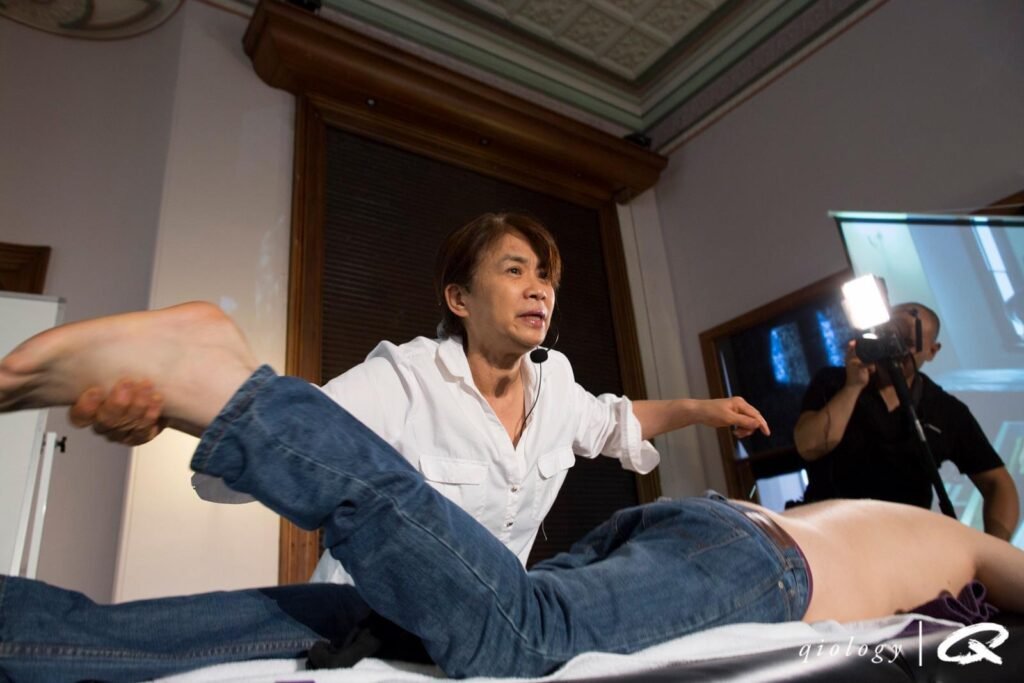
Kiyoshi Nagano Sensei

Who was Master Nagano?
In post-war Japan, Master Acupuncturist Kiyoshi Nagano began a remarkable and fruitful investigation. Despite being blind, Nagano memorized classical Chinese medicine literature and developed a unique and ingenious theoretical and clinical approach that incorporated classical concepts and emergent insights from Western medicine. His ideas and methods did not follow an established group, which brought a certain stigma in Japanese acupuncture circles. Being mentally robust, he was proud of his ‘lone wolf’ status. Over the next half a century – using his extraordinary palpation and pulse diagnosis skills as a guide – he crafted ingenious acupuncture protocols for all types of conditions. He also became a mentor to two of the most important Japanese acupuncture teachers of our time: Master Acupuncturist Kiiko Matsumoto and Tsuyoshi Shimamura. Master Nagano passed away in 2003
You may find acupuncturist outside of Japan, including the US, claim that they “follow Master Nagano” or that they are teaching his style.Their knowledge of his practice is limited to the information gathered through texts (as Master Nagano did not have any non-Japanese apprentices) and therefore leaves a lot of room for misinterpretation.In order to preserve his lineage, methods of diagnosing and treatments, Master Nagano gave his written permissionto Kiiko Matsumoto to teach his style in the West.
In Japan, a practitioner learns the medicine through experience. For hundreds of years students would learn this medicine through direct observation of a teacher in their clinic. In 1945 some of the first acupuncture schools began to emerge and students were formally taught in classrooms – this is sometimes referred to as the “Americanization of Acupuncture”. These students however, were required then, and still are today, to spend many hours following Master Acupuncturist in clinics.
All students of acupuncture in Japan commit hundreds of hours, observing thousands of treatments in their teacher’s clinics. This allows ample opportunity to learn every detail of the Mater’s style and ask questions. This type of apprenticeship is taken very seriously and is still an essential part of the acupuncture training culture in Japan.While in the West, someone may ask “which school did you attend for your acupuncture training?”, in Japan, the question is always “who is your teacher?“. Only those who have dedicated the time to following the Master Acupuncturist in their clinic can claim that he/she is “their teacher” and truly represent that Master’s style of practice.
KMS instructor approval criteria
There are many people that offer instructions or comments on KMS acupuncture. They have various degrees of understanding of Kiiko Sensei’s techniques and clinical approaches. In order to preserve a valid representation of this style as well as the legacy of Master Nagano, Kiiko Matsumoto has the following criteria for instructors of KMS acupuncture:
- someone who has practiced KMS acupuncture for a length of time
- someone who has apprenticed with Kiiko Matsumoto in her practice and closely observed her techniques
- someone who is constantly taking classes with Kiiko Sensei and expanding their knowledge.
- someone who has a clear understanding of the material both past and present
- someone who has personally been approved by Kiiko Matsumoto to teach the material
KMS acupuncture instructors must meet all of the above listed criteria.
The following individuals meet approval criteria:
Monika Kobylecka, Lisa McLoughlin, Neal Sirwinski, Grace Rollins, Holly Guzman, Andy Harop, Ran Kalif, Julie Lim Greif, Ana Nieves & Vidhya “V” Rojanavongse.
Plus KMS instructors at: Five Branches University, Eastern School of Acupuncture & AcuMed.
Course Curriculum
Material Covered in the Four-day Intensive Course:
* All classes will have a hands-on demonstration and practical component where participants will be practicing on each other. If you have any concerns or issues, please inform us in advance so we can consider other ways to accommodate you.
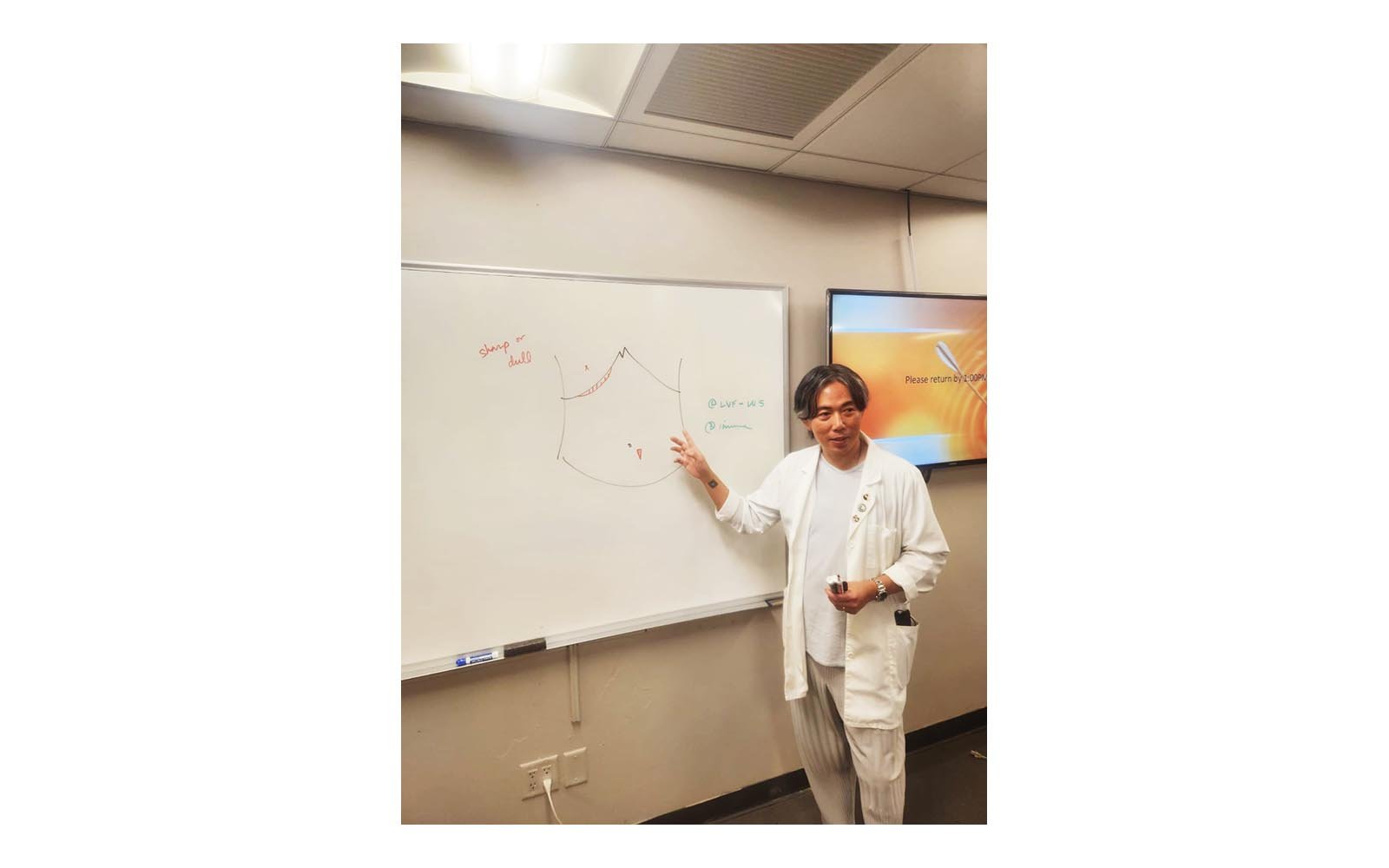
Day One
Introduction to Kiiko Matsumoto Style Acupuncture
- Kiiko Matsumoto and the development of KMS acupuncture
- Similarities and differences between KMS and other acupuncture systems
- The 11 major categories of disharmony
- Importance of medical history and unhealed scars/trauma
- Importance of accuracy in palpation, point location and needle angles
- Tools used: types of needles, moxa, diode rings and other
- How to incorporate KMS Acupuncture into your own practice
- How to utilize Vol. 1 and Vol. 2 of Kiiko Matsumoto’s Clinical Strategies books
Introduction to abdominal palpation
- Diagnosis and identification of the major KMS reflex areas on the abdomen, back and neck
- Understand the different reflexes on the hara and their relationships to many common disorders and musculoskeletal issues
- Proper depth and strength of palpation
- Signs to look for during palpation
Fire/Metal/Water points
- Understand the relationship of fire point reactivity to excess in the channel and/or organ
- Palpating fire points for diagnosis
- Utilizing metal and water point combinations to address fire point pressure pain
- Clinical applications of fire/metal/water points
Practical/Hands on demonstration of hara palpation and fire/metal/water points
Introduction to moxibustion and diode rings
- When to use moxibustion during treatment
- How to apply direct moxa to specific acupuncture points
- Clinical applications of moxa and diode rings
- How to roll rice grain size moxa, apply shiunko cream, proper lighting of moxa and how to extinguish it to prevent burns
Practical/Hands on demonstration of direct moxa and diode rings
Day Two
Oketsu
- Identify Oketsu as a major category of blood stagnation in the abdomen
- Understand the primary importance of Oketsu as a first step in treatment
- How Oketsu can affect organs such as the Liver and Lung/Immune
- Clinical presentations of Oketsu: GYN, intestinal disorders, surgeries, trauma, immunity, etc.
Immune deficiency and Lung patterns
- Identify Immune deficiency as a major category of disharmony
- Relationship of Lung patterns and immune deficiency
- Clinical presentations related to Lung and immune imbalances: respiratory disorders, allergies, autoimmune, neuropathy, etc.
Practical/Hands-on demonstration for treatment of Oketsu and Immune deficiency
Stomach Qi Deficiency
- What is Stomach Qi deficiency and why it’s important to address
- Recognizing the pulse that shows signs of Stomach Qi deficiency
- Clinical presentations related to Stomach Qi deficiency: digestive disorders, muscle spasms, fatigue, pregnancy, knee pain, etc
Spleen patterns
- Spleen imbalances and how it affects blood sugar, digestion and muscle pains/spasms
- Clinical presentations related to Spleen patterns: digestive disorders, blood sugar imbalances, blood pressure, anemia, muscle spasms, shoulder pain, etc.
Practical/Hands-on demonstration for treatment of Stomach Qi and Spleen
Day three
Kidney and adrenal patterns
- The importance of Kidney being the deepest organ
- Understand the relationship between the Kidney and adrenal gland
- Adrenal insufficiency and the stress response
- Clinical presentations related to Kidney and adrenal patterns: shock, trauma, stress, osteoporosis, arthritis, low back pain, GYN, hormonal imbalances, etc.
Practical/Hands on demonstration for treatment of Kidney and Adrenal reflexes
Liver and Heart patterns
- Liver patterns and how to distinguish between excess, deficiency, and fatty liver
- Understand the connection between the Heart and Kidney
- The effects of the ANS on the Heart and the stress response
- Clinical presentations related to Liver patterns: liver disorders, GYN, toxicity, prostatitis, constipation, etc.
- Clinical presentations related to Heart patterns: cardiovascular issues, blood pressure, emotions, etc.
Practical/Hands on demonstration for treatment of Liver and Heart patterns
Day four
Autonomic Nervous System (ANS) imbalances
- Recognize the implications of an ANS imbalance and the effects on sympathetic and parasympathetic functions
- Understand the relationship of ANS imbalances to the Kidney and adrenal gland
- How to palpate the SCM muscle to identify ANS imbalances
- Other patterns related to pressure pain on the SCM
- Clinical presentations related to ANS imbalance: stress, anxiety, digestion, blood pressure, neck pain, etc.
Practical/Hands on demonstration for treatment of an ANS imbalance
Introduction to structural imbalances
- Overview of structural imbalances as major categories of disharmony
- Introduction to Dai Mai imbalances, Neurovascular compression, Basilar vertebral artery insufficiency, Sphenoid bone imbalance, etc.
Recap and review of seminar, Q&A
Summary Lecture and Q & A at end of each day:
Last half hour of class each day will be dedicated to a very brief summary of what was covered on the day with emphasis on answering students’ questions about the material.
Seminar Attendance Details
Foundations in Kiiko Matsumoto Style Acupuncture
A four-day intensive course
Sydney, Australia:
Dates: Fri 9th, Sat 10th, Sun 11th, Mon 12th Jan 2026
Time: 9am-6pm Each Day (please arrive at 8:30am on first day)
Duration: 30 Contact Hours
CPD: 30 Formal CPD Points
Brisbane, Australia:
Dates: Fri 16th, Sat 17th, Sun 18th, Mon 19th Jan 2026
Time: 9am-6pm Each Day (please arrive at 8:30am on first day)
Duration: 30 Contact Hours
CPD: 30 Formal CPD Points
Morning & Afternoon tea provided, suitable for those with dietary restrictions.
Please provide your own lunch, or purchase lunch at a suitable location nearby.
This four-day intensive course is designed to build the practitioner from the ground up in Kiiko Matsumoto Style Acupuncture, through detailed lectures, and direct hands-on experience and attention from the instructor, Vidhya Rojanavongse. The course will be 50%+ hands-on and will cover a large amount of material.
Each class has a maximum of 35 attendees permitted, to allow for individualised attention.
Price/Payment Plans
These seminars are strictly limited to 35 attendees per seminar. Please book now to avoid disappointment.
For registration, booking deposits, or full payments, contact Qiology, or register above with our secure and confidential online payment platform.
When booking through the online booking system and when paying through the secure and confidential online payment platform, please select carefully which course/seminar you will be attending.
Full Price
Practitioners: AUD$2200 (Including GST)
Students: AUD$1980 (Including GST)
Cheque/Bank Transfer/Credit Card Payments available.
Payment Plans
Payment plans are available after an initial booking deposit. (These plans are available for those who book before 30th October 2025.)
Practitioners
AUD$880 Deposit, followed by two payments of AUD$660 (Due, strictly by 30th Nov 2025, and 31st Dec 2025) -Prices Include GST
Students
AUD$660 Deposit, followed by two payments of AUD$660 (Due, strictly by 30th Nov 2025, and 31st Dec 2025) -Prices Include GST
for any clarification please email: info@qiology.com.au | or call on the mobile: +61 405 044 576
Overseas Wire Transfer Details for those Depositing into Qiology Bank Account from Overseas:
Account Name: Qiology
Bank Name: St George Bank
Bank Address: 4-16 Montgomery Street, Kogarah (Sydney), NSW 2217 Australia
SWIFT Code: SGBLAU2S
Account#: 484 964 964
Transfer Details for Bank Deposits within Australia:
Account Name: Qiology
Bank Name: St George Bank
BSB: 112 879
Account#: 484 964 964


